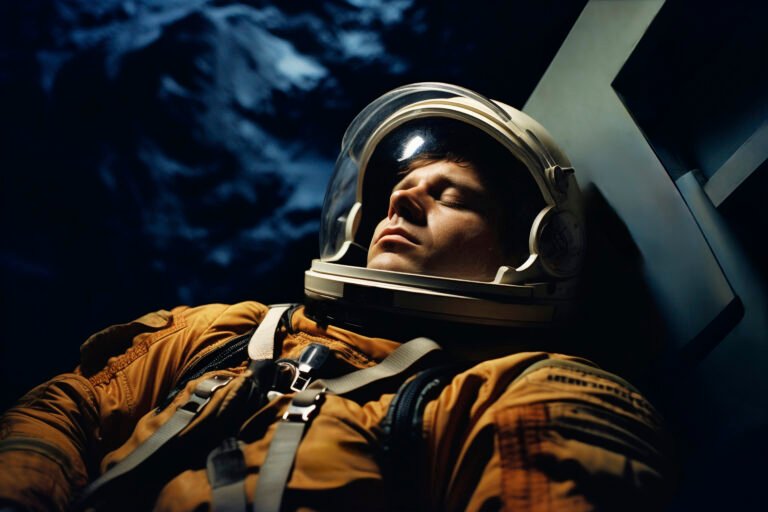Space Tourism vs. Luxury Cruises: 9 Key Cost Comparisons

Space tourism and luxury cruises both promise bucket-list experiences — one promises a few minutes or days above Earth, the other promises weeks (or even months) of sea-borne pampering. But the two are wildly different when it comes to money: sticker price, what’s included, hidden extras, training, insurance, environmental cost and even resale value. This article breaks down 9 key cost comparisons so you can judge value, figure out total expense, and decide whether space tourism (the focus word) or ultra-luxury cruising makes more sense for your budget and appetite for adventure.

Table of Contents
1) Up-front ticket price: headline numbers and ranges
The single clearest cost difference is the headline price.
- Suborbital space tourism (e.g., Virgin Galactic, Blue Origin): Suborbital seats have been sold in the hundreds of thousands to low millions range. Virgin Galactic has been selling seats around US$600,000 for its Delta-class flights (with plans to raise prices). Blue Origin’s public pricing remains opaque — initial auctioned seats fetched millions, but normal retail pricing is not publicly published. South China Morning Post
- Orbital/private missions (e.g., Axiom Space / Crew Dragon via SpaceX): These are an order of magnitude more expensive. Reports estimate roughly US$55 million to US$70 million per seat for private orbital missions to the International Space Station or bespoke orbital trips. This includes multi-day to multi-week experiences and significant mission support. Reuters
- Luxury cruises (top lines like Seabourn, Silversea, Regent): Luxury cruise pricing varies by itinerary and suite class. Typical high-end daily rates often start around US$1,000 per person per day, with ultra-luxury world cruises or specialty suites running to many tens or hundreds of thousands for long voyages (e.g., some world cruises priced at US$81,000–US$134,000 per person for 120–145+ night itineraries). The Points Guy+2Business Insider+2
What this means: an entry suborbital space flight may be comparable to a short luxury cruise (a few days) on price per booking — but orbital spaceflights are in a different financial league (tens of millions vs thousands).

2) Per-day cost (true daily price of the experience)
People mentally compare vacations by “cost per day.” That metric flips how we perceive value.
- Suborbital space tourism: A 90-minute program from check-in to return might include only a few minutes of microgravity; if you amortize a US$600k ticket across the actual time in space (minutes), the per-minute cost is astronomical. Even stretched across a 1–3 day trip, the per-day cost remains tens to hundreds of thousands of dollars. Wikipedia
- Orbital missions: A two-week Axiom/Dragon seat priced at US$55M equates to ~US$3.9M per day — again, a different scale altogether. Reuters
- Luxury cruises: A luxury cruise that quotes US$1,000 per person per day is transparent and predictable — a 10-day cruise at that rate is roughly US$10,000 per person, and world cruises (100+ days) commonly run from tens to low hundreds of thousands per person depending on suite choice and inclusions. The Points Guy
Takeaway: If you think in per-day value, luxury cruises are far more economical than space tourism; if you value “once-in-a-lifetime” bragging rights, space tourism commands a premium.
3) What’s included vs. add-ons (meals, excursions, training, flights)
Headline price rarely equals total cost — inclusions matter.
- Space tourism:
- Suborbital packages sometimes include pre-flight training, mission briefings, some ground transportation and meals — but extras like private medicals, bespoke travel arrangements, or extra training sessions can add cost. Virgin Galactic’s package historically bundled some pre-flight services, but details and future price increases may change inclusions. Blue Origin’s buyer experience varies. South China Morning Post
- Orbital missions (Axiom/SpaceX) include extensive training, mission planning, launch hardware usage and mission support — the high ticket price reflects those huge service bundles. Business reporting describes Axiom packages including long training and mission services as part of the multi-million price. Business Insider
- Luxury cruises:
- Many luxury lines offer all-inclusive fares that cover room, most meals, onboard entertainment, gratuities and sometimes select shore excursions and Wi-Fi. Ultra-luxury lines differ in which specialty services are included. The transparency of cruise inclusions (and the ability to book excursions or upgrades a la carte) makes budgeting simpler. The Points Guy
Conclusion: Space tourism’s big ticket pays for safety systems and complex mission operations; cruises often roll hospitality and entertainment into a predictable fare.
4) Training & preparation costs (time = money)
Training requirements are a direct cost (time off work, travel, private coaching) and sometimes an explicit line item.
- Suborbital flights: Training is usually short — days to a few weeks of physical checks, centrifuge/zero-G familiarization and briefings — often included or modestly priced relative to the ticket. Wikipedia
- Orbital missions: Multi-week to year-long training programs are typical for flights that visit the ISS or perform scientific work. Axiom Space’s offerings have been described as including yearlong astronaut training for certain high-end packages — those programs help explain why some tickets are reported at US$70M when training and mission support are included. Business Insider
- Luxury cruises: Preparation is minimal — visa planning, vaccinations for some destinations, and any specialty wardrobe or equipment (polar expedition gear) are the main pre-trip expenses. For expedition cruises (Antarctica, polar regions), companies sometimes mandate or recommend additional gear you may need to buy or rent. The Points Guy
Practical note: If you value low prep overhead, cruises win. If you’re prepared to invest months in training for an orbital mission, expect that to form a meaningful part of the price.
5) Insurance, medical, and liability costs
Insurance is often overlooked but important.
- Space tourism: Insurance coverage can be complicated and expensive. Many personal travel insurance policies exclude spaceflight; specialized coverage may be required or offered by providers for an additional premium. Operators also require medical screening and waivers; private medical clearances or counter-indemnities may be costly. Reuters
- Luxury cruises: Travel insurance for cruises is widely available and typically affordable, covering trip cancellation, medical evacuation and missed connections. For very expensive world cruises, buyers often purchase premium insurance to cover high-value suites and expensive onboard credits. For expedition cruises, medevac coverage may be recommended. The Points Guy
Bottom line: Expect higher insurance complexity and potentially higher premiums for space tourism, especially orbital flights.
6) Optional extras & on-trip spending (souvenirs, excursions, upgrades)
Post-booking spending patterns differ.
- Space tourism: The mission itself is the product — there are limited onboard retail or excursion upsells. The most likely extras are post-flight media packages, private celebrations, additional training, or bespoke travel add-ons (luxury hotels before/after launch). These are typically non-recurring and relatively small compared to the ticket. Wikipedia
- Cruises: A la carte excursions, premium dining, spa services, shore tours, high-end alcoholic beverages, private transfers and specialty experiences can add substantially to a cruise fare. On luxury lines many services are included, but passengers often upgrade excursions or book private shore experiences that raise the total trip cost. World cruise passengers sometimes add pre- and post-voyage land tours. The Points Guy
Advice: Factor in likely extras when comparing — a “included” luxury cruise may still end up costing significantly more per person if you add private shore excursions or suite upgrades.
7) Resale, cancellations, and refundability
How easy is it to recoup money if plans change?
- Space tourism: Secondary markets exist for spaceflight seats, but resale depends on operator policies and demand. Because the market is small and regulatory approvals are needed, transferring a ticket (especially for orbital missions) may be complex or limited. Cancellation/refund policies vary and could be strict. Blue Origin+1
- Luxury cruises: Cruise lines generally have structured cancellation windows and tiered refund/credit policies; many passengers buy cancellation insurance. Suites on big-name luxury lines sometimes resell through brokers and marketplaces if plans change, and world cruise slots can be re-stocked through waitlists or transfer services. Overall, the cruise market’s liquidity is far higher. The Points Guy
Implication: If you think your schedule might change, cruises typically give more predictable refund/transfer options.
8) Environmental cost & carbon (externalities priced or unpriced)
Environmental impact is increasingly part of the “cost” conversation.
- Space tourism: Rockets produce concentrated emissions and water vapor emissions in the upper atmosphere; suborbital & orbital launches have environmental impacts that are currently being debated and researched. Because the industry is small, individual flights are high-emission per passenger compared with most holiday types, and carbon is rarely priced into the ticket. Regulatory pressure and carbon offset programs may evolve. Wikipedia
- Luxury cruises: Ships burn large amounts of fuel over long itineraries; cruise lines are investing in cleaner fuels and emissions controls, but per-passenger emissions on ocean-going ships can be significant, especially on long world cruises. Luxury lines tout sustainability programs, but environmental cost remains a factor to weigh. The Points Guy
Consideration: If you want to internalize environmental cost, add carbon offsetting or favor operators with transparent sustainability commitments — but expect the environmental footprint for space tourism per passenger to remain high for the foreseeable term.
9) Perceived value: exclusivity, novelty, and “what you get”
Cost is not only money — it’s value for the experience you want.
- Space tourism (focus word: Space Tourism): The rarity and novelty of seeing Earth from above, microgravity minutes, and the prestige of being among the first consumers of humanity’s newest frontier carry intangible value. For many buyers, a suborbital trip is a lifetime milestone worth a high cost-per-minute. Orbital missions escalate that prestige massively; participants often fund science, diplomacy, or publicity as part of the cost. Reuters
- Luxury cruises: Value is measured in comfort, discovery, service excellence, culinary programs, entertainment, and the ability to see many ports in long, relaxed itineraries. A world cruise can be transformative in a different way — cultural depth, friendships onboard, and multiple countries visited for a price that, while high, is far lower than orbital spaceflight. The Points Guy
Which is a better “value”? It depends on what you prioritize: once-in-a-lifetime, adrenaline-filled novelty (space tourism) versus extended comfort, cultural depth, and value per day (luxury cruises).
Quick comparison table — headline metrics
| Category | Suborbital Space Tourism | Orbital / Private Mission | Luxury Cruise (High-end) |
|---|---|---|---|
| Typical headline price | US$200k–US$600k+ per seat (subject to change) Wikipedia | ~US$55M–US$70M per seat for orbital private missions. Reuters+1 | US$1,000+/person/day; world cruises US$80k–US$134k+ per person for long voyages. The Points Guy |
| Duration | Minutes in microgravity; 1–3 day program | Days–weeks (multi-week ISS visits) | Days–months (10–145+ nights) Wikipedia |
| Inclusions | Varies; some training & pre-flight services | Extensive training, mission support included | Often all-inclusive (meals, entertainment); excursions sometimes extra Business Insider |
| Training burden | Short (days to weeks) | Long (weeks to year) — major time commitment Business Insider | Minimal — visas, vaccinations, expedition gear for special itineraries The Points Guy |
| Insurance complexity | High; specialized coverage often needed People.com | Very high; mission insurance & medevac considerations Reuters | Readily available travel & cruise insurance; medevac options for remote itineraries The Points Guy |
| Resale/Refundability | Limited, operator dependent Blue Origin | Challenging; regulatory approvals may apply axiomspace.com | Structured cancellation policies; secondary markets exist The Points Guy |
| Environmental impact | High per passenger; under scrutiny Wikipedia | Very high per passenger (orbital launch emissions) Reuters | |
| Perceived value | Extremely high for novelty/exclusivity | Ultra high — prestige + scientific/educational value Business Insider | High for service, comfort, cultural depth (better per-day economics) The Points Guy |
Tips & tricks for comparing cost before you book
- Break the total into categories: headline ticket, training/visas, travel to/from departure, insurance, extras, and potential carbon offset. For space tourism, training & insurance can be a large hidden cost. Business Insider
- Ask for an itemized inclusions list: cruise lines and space operators vary — get it in writing. The Points Guy
- Consider per-day math: divide total expected cost by days of meaningful experience — for comparison, a 3-minute microgravity experience vs. 100 days at sea. Wikipedia
- Check refund and transfer policies: for big money purchases, cancellation insurance is essential. Cruise policies are standardized; spaceflight transfer rules are evolving. The Points Guy
- Factor environmental cost if that matters to you: ask operators about sustainability programs and consider offsetting or donating to related NGOs. Wikipedia
FAQs (5–7 questions)
Q1: How much does a Virgin Galactic ticket cost today?
A: Recent reports peg Virgin Galactic’s seat pricing around US$600,000 for Delta suborbital seats, with plans by the company to raise prices in coming years. Always confirm with the operator for the latest figures. South China Morning Post
Q2: Are orbital spaceflights really tens of millions of dollars?
A: Yes. Private orbital missions arranged via Axiom/SpaceX have been reported at roughly US$55M per seat (some reporting and interviews indicate ranges up to ~US$70M depending on training and program scope). These include mission support and extensive training. Reuters
Q3: Can I insure a space tourism trip?
A: Standard travel insurance rarely covers spaceflight; specialized policies or operator-mandated waivers and medical screening are common. Expect higher premiums and narrower coverage. People.com
Q4: Which gives more “bang for buck”: a world cruise or an orbital trip?
A: In pure economic terms, a luxury world cruise provides many days of high-quality travel at a far lower per-day cost than orbital spaceflight. But “bang for buck” depends on whether you value novelty/once-in-a-lifetime prestige (space) or extended comfort and cultural exposure (cruise). The Points Guy
Q5: Are space tourism prices likely to fall?
A: Long-term, increased flight rates and technology improvements could lower per-seat costs, but regulatory, safety and hardware costs keep prices high for some time. Suborbital prices may drop faster than orbital mission costs. Wikipedia
Q6: What about luxury cruise deals — can you save significantly?
A: Yes — cruises often have promotional fares, last-minute deals, and loyalty discounts; booking in shoulder seasons or choosing interior or lower-tier suites reduces costs. World cruises remain premium but can also feature early-booking perks. The Points Guy
Conclusion
If your decision is purely financial, luxury cruises generally deliver more days of premium experience per dollar and are more predictable to budget. If your decision is about rarity, prestige and a life-defining moment, space tourism (especially orbital missions) offers a qualitatively different experience but at a dramatically higher price. For those who want some of both: smaller luxury expedition cruises (polar, Galápagos) offer extraordinary, rare experiences that can be far more budget-friendly than even a suborbital ticket.






